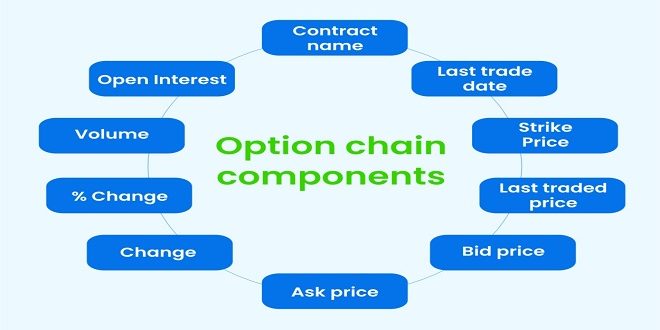With so many alternatives accessible, it might be difficult to choose the best option chain. You may, however, make an informed choice if you have some fundamental information as well as advice. This article will outline five important factors to take into account when assessing option chain, along with simple examples to help you grasp the ideas. You may choose an option chain that best suits your trading style as well as risk tolerance by keeping these pointers in mind.
-
Understand the Underlying Asset
Assessing the underlying asset on which the option chain is built is the first stage. The underlying’s volatility, impending events or earnings releases, as well as past price movements, are some important aspects to take into account. Larger price fluctuations are possible with higher volatility assets, but they also usually come with more expensive choices. The underlying’s normal trading pattern should be somewhat familiar to you. In comparison to utility stocks, technology stocks could be more erratic. It may also assist you in identifying possible directional bets to take into account any known impending catalysts for price change. It is crucial to invest sufficient time in thoroughly examining the underlying asset while evaluating option chains.
-
Evaluate Expiration Dates
After reviewing the underlying, consider the expiration dates offered in the option chain. Near-term expirations within the next month provide more leverage but also come with additional time decay risks. Further dated expirations have less time decay but also take longer to play out a view on the underlying. Picking an expiration should align with your intended holding period and risk tolerance for time decay. Near-term expirations are better for swing trades while further dates allow for longer term strategic plays. Having a range of expirations gives more flexibility to find an expiration that matches your outlook.
-
Consider Strike Prices
Strike prices represent the predetermined price levels at which options can be exercised. Looking at the spread of available strike prices tells you where implied volatility is highest. Wider spreads generally imply higher volatility expectations. You’ll want strikes above and below the current underlying price to give your view room to be right. Too far OTM strikes have low open interest and liquidity. Too close ATM strikes are expensive for the protection provided. Evaluate where options are trading actively and where you believe the underlying may trade by expiration. This helps identify optimal strike prices to fit your prediction.
-
Analyze Option Types
In addition to expiration dates and strike prices, consider the types of options available – calls, puts or complex spreads. Calls provide long upside exposure while puts hedge downside risk. Complex spreads allow constructing positions with different risk-reward profiles. Evaluate which type aligns best with your market view. For example, a short strangle makes sense for a trader expecting low volatility while a long straddle profits from increased volatility. The optimal strategy depends on your outlook for the underlying’s direction and volatility by expiration. Take the time to understand how different option types function before selecting ones to trade.
-
Consider Option Greeks
No discussion of option chains would be complete without mentioning the Greeks. The Greeks describe an option’s sensitivity to changes in factors like the underlying price, volatility and time. Delta measures directional exposure to the underlying. Gamma shows how delta changes with price movements. Vega reflects sensitivity to volatility. Theta represents daily time decay. Rho indicates interest rate sensitivity. Looking at an option’s Greeks can help identify optimal positions. For example, an option with high gamma but low vega may be preferable if you expect a large move but not a volatility spike. The Greeks provide valuable insights into risk and help you select chains aligned with your market assumptions.
Conclusion
While initially daunting, taking the time to evaluate these key areas can make choosing an option chain much more straightforward. Understanding the underlying asset, expiration dates, strike prices, option types, and Greeks provides the foundational knowledge to identify chains that fit your strategy. 5paisa investors should always consider their outlook, risk tolerance and trading goals when assessing option chains. With practice, selecting optimal chains becomes easier. Keeping these tips in mind provides a framework to consistently analyze and trade option chains for the best results.





